Curious to know which steak temperatures give you your preferred level of doneness? Use this guide to know when to take your steak off the heat for the best results. Additionally, continue reading for the best tips on how to cook a perfect steak. You won’t be guessing your steak’s doneness or taste after reading this guide!
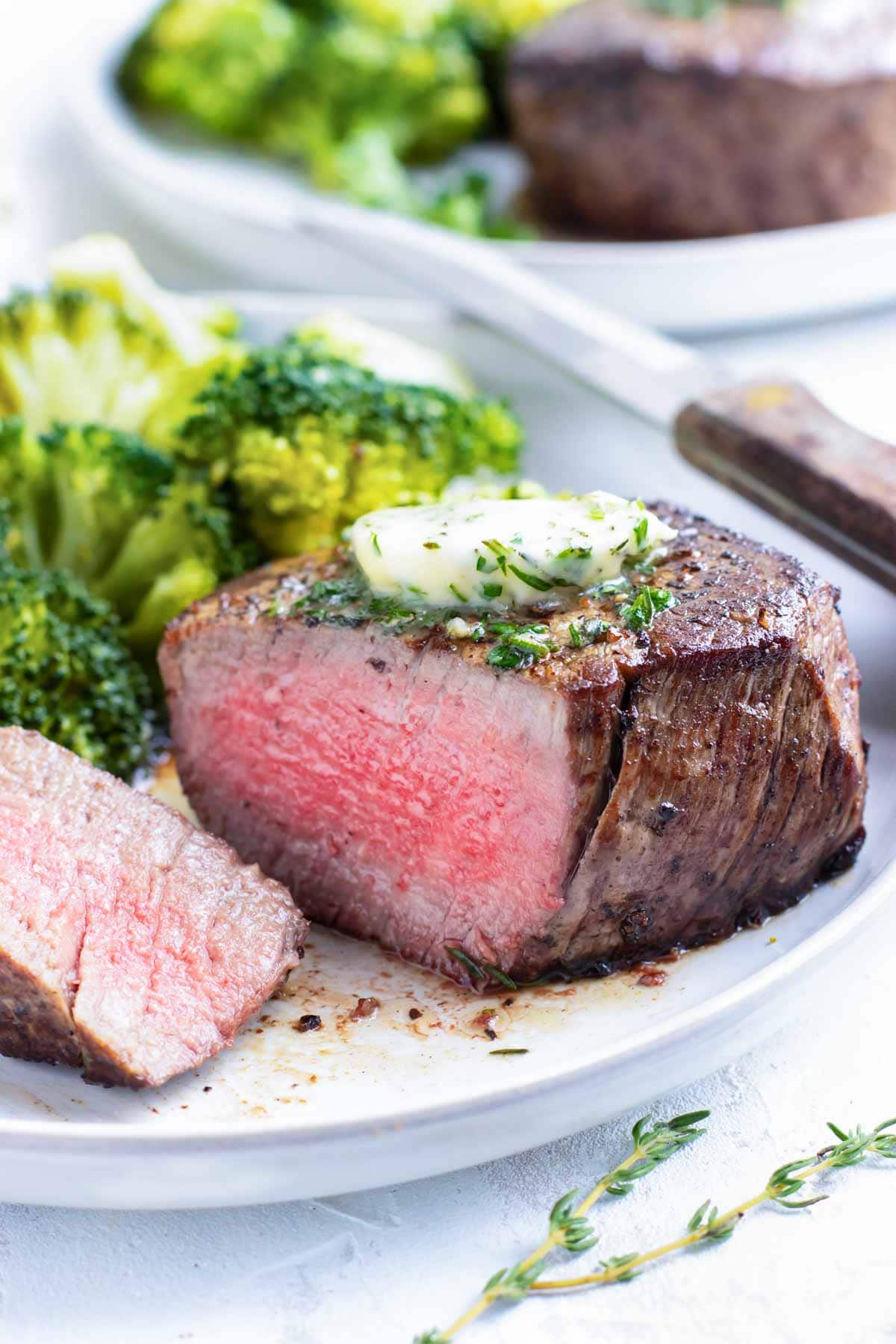
You can most definitely get restaurant-level steaks right at home with this guide. From the internal temperature to the cooking method, you’ll get the perfect steak every time!
Steak Doneness Guide
Doneness is defined by personal preference for texture, flavor, and juiciness. Let’s take a look at each target temperature for desired doneness. Keep in mind, this is the internal temperature of the meat, so having a meat thermometer is helpful for following this guide.
It’s important to consider to take your steak off the heat 5°F below your preferred doneness. Your steak will still be cooking as it is resting.
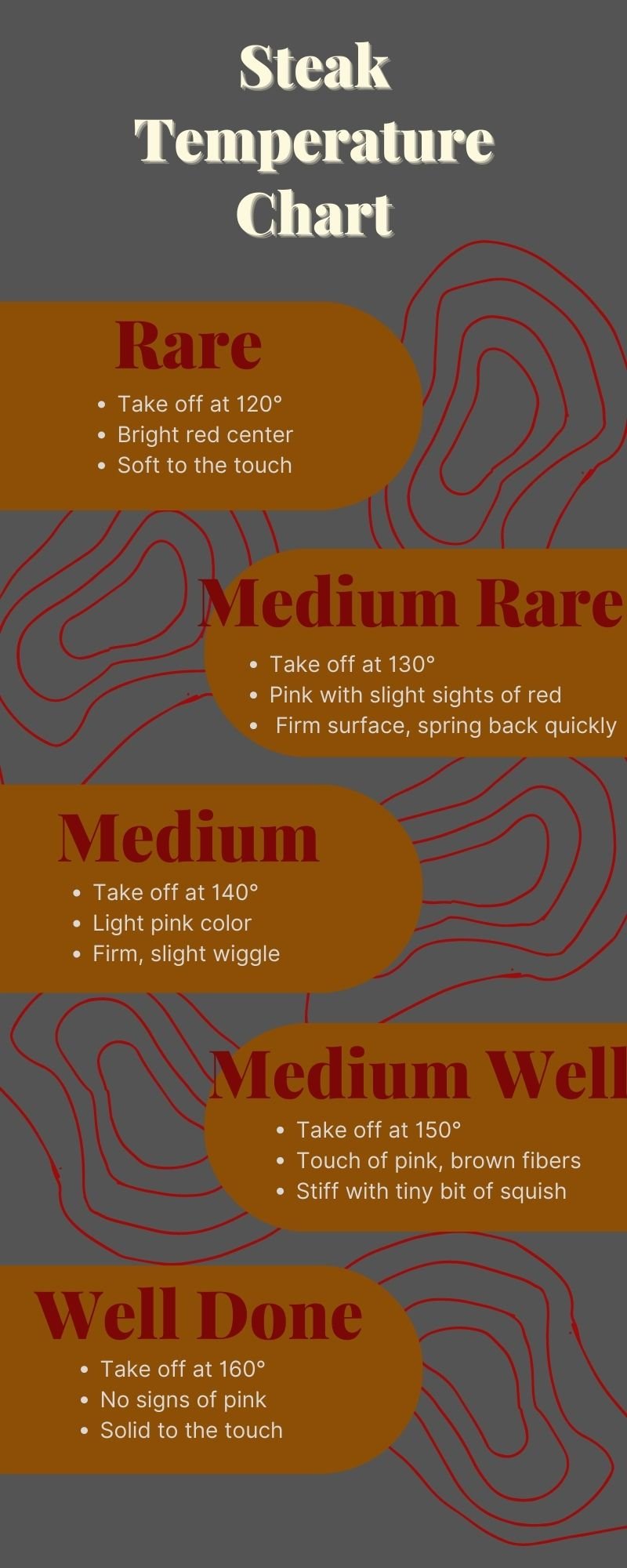
Rare
Take off at 120°
For a rare steak, you’ll cook the first side for ~5 minutes, then the other side for ~3 minutes. This steak will be warm through the center and slightly charred on the outside. It will have a bright, red center. This is not as common and is more for the true carnivore-type people.
Medium Rare
Take off at 130°
A medium-rare steak will be cooked on one side for ~5 minutes, then the other side for ~4 minutes. This is one of the most commonly asked level of doneness for a steak. It will be well browned on the outside. It’ll be pink in the center with slight sights of red.
Medium
Take off at 140°
A medium steak will be cooked on the first side for ~6 minutes, then the next side for ~4 minutes. The outside of this steak will be a darker brown, and the center of your steak will have a light pink color. However, look for more brown in the center than pink.
Medium Well
Take off at 150°
For a medium-well steak, you’ll cook the first side for ~7 minutes, then the second side for ~5 minutes. This steak will definitely have a dark brown outer layer with thin, flakey charring. It will only have a touch of pink in the center.
Well Done
Take off at 160°
For a well-done steak, cook it on one side for ~12 minutes before flipping to the other side to cook for ~10 minutes. Don’t assume that well-done means burned and dry. The key is to cook it at a low temperature. Of course the center of the steak will not have any signs of pink, and the outside will be browned to the max.
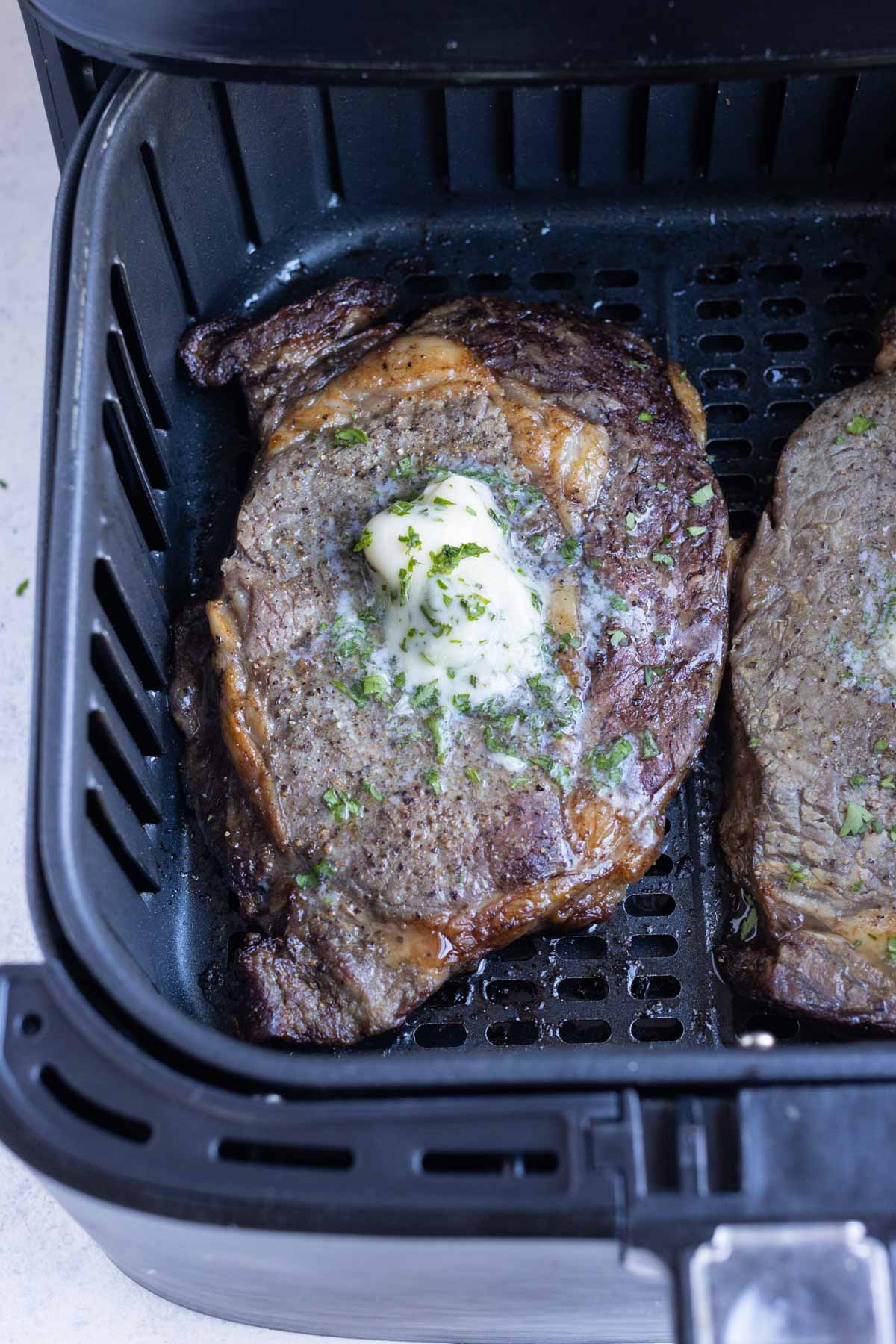
The Best Way to Prepare Your Steak
There’s more to steak than just knowing when to take it off the heat. In addition to understanding internal temperatures and physical properties of steaks, preparing it correctly will only help you in your quest to cook the perfect at-home, restaurant-style steak.
Before we get into the 3 steps of preparation, let’s talk about how searing your steak is of the utmost importance. Getting the outside layer of your steak to 285°F is what will change the chemical properties of your steak.
Hold up—the chemical properties… inside of a steak? The 285°F mark is the magic moment when your steak will brown. This change in color is actually a set of chemical changes—called the Maillard Reaction—that result in delicious flavor compounds.
So how can we ensure that you’ll get your steak to reach the Maillard Reaction? It’s all about eliminating surface moisture. Here are three tips:
- Your steak needs to come to room temperature before you do anything with it. Let it sit out on your counter for 30-45 minutes. This ensures that your steak will cook evenly.
- When seasoning your steak, use larger grained salt. This will suck out more moisture faster than a smaller grained salt. Give it time; salt your steak at least an hour before cooking. If you forget or don’t have that time, you can also salt it right before you put it on the grill or pan.
- Pat your steak dry after marinading it. You won’t be taking away any flavoring because the point of the marinade is to penetrate flavor beyond the surface of the steak.
How to Cook a Steak
You know when you bake cookies in the oven and the recipe tells you to take the cookies out before they’re actually done? That concept is what you should be doing for cooking a steak. Why? Because it’s still cooking even when you take it off the heat.
A good rule of thumb is to take your steak off the grill or pan 5°F below your preferred doneness. This will ensure that your steak won’t be overdone when it’s time to eat.
It’s important to remember that there are many different types of steaks, like filet mignon, strip steak, and top sirloin. Each cut of meat might need to be cooked differently. Here are some techniques that you can use as a guide.
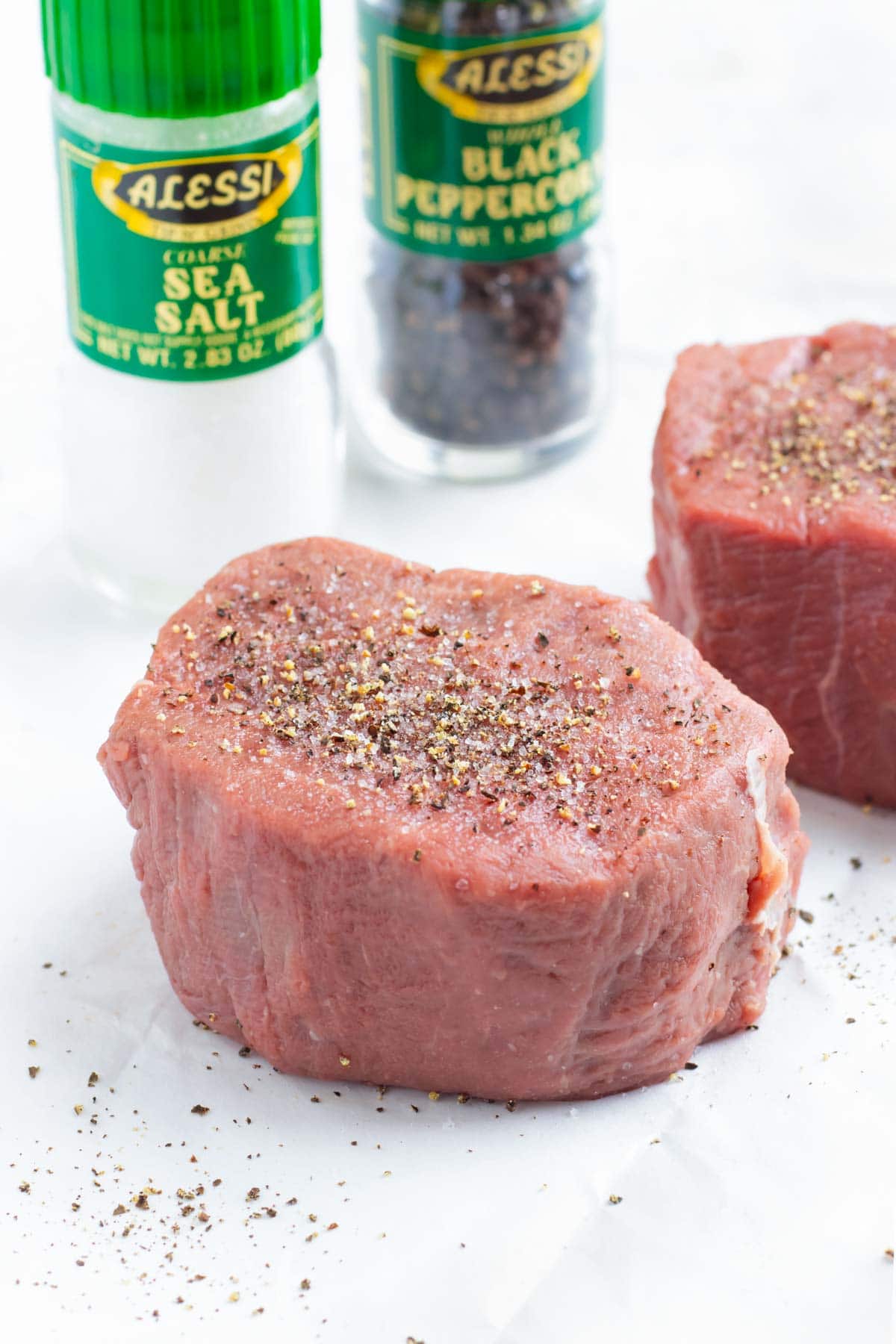
Air Fry
Believe it or not, but you can use an air fryer! Check out this Easy Air Fryer Steak recipe where you can get the perfect sear in only 15 minutes.
Grill
When it comes to grilling, don’t flip it too much. Flipping it once a little over halfway through cooking will ensure that your steak is evenly cooked. You’ll have a perfectly charred steak with a juicy center. This is the prime place to experience the Maillard Reaction. Always grill at a high heat.
Reverse Sear
A reverse sear is exactly how it sounds—instead of searing first, you sear last! You’re cooking it from the inside out. Thicker steaks do very well with this technique, as do fattier steaks like ribeye or Wagyu.
You want to use the oven at a very low heat, somewhere around 250°F. Take it out of the oven once it’s 10°F less than your desired doneness because you still need to sear it in a pan or skillet on the stove. You can reverse sear in a covered grill too, but you’ll need to use a cast iron skillet to prevent the steak searing before it’s cooked to your preferred doneness.
Pan Sear
Pan searing requires high heat and high smoke-point oil. Steak cuts like the New York strip or ribeye are perfect for this method. Only flip twice with this one. You’ll get a beautifully browned and crisp steak.
Broil
Use a more tender steak for this method—ribeyes, filet mignons, New York strips, flat irons, or T-bones are ideal. You’ll want to preheat your oven to broil before you put your steak in. Set the rack 4 inches from the heat source. This one’s pretty simple, and it will give you a perfect crust especially if you add a crumble of cheeses or onions and mushrooms on the top.
Sear Roast
This cooking method is slightly different, but it’s very simple. Preheat your oven to 300°F, add oil to your pan, place the pan in the oven, then add your steak inside once your oven has reached 300°F.
If you want that crusty sear, check out this Filet Mignon Recipe that gives you step-by-step instructions for a perfect, romantic date night dish at home!
You will not need to flip with this one because the oil is doing the work on the under side of the steak. You don’t need your steak in the oven for long—likely 5 minutes maximum.
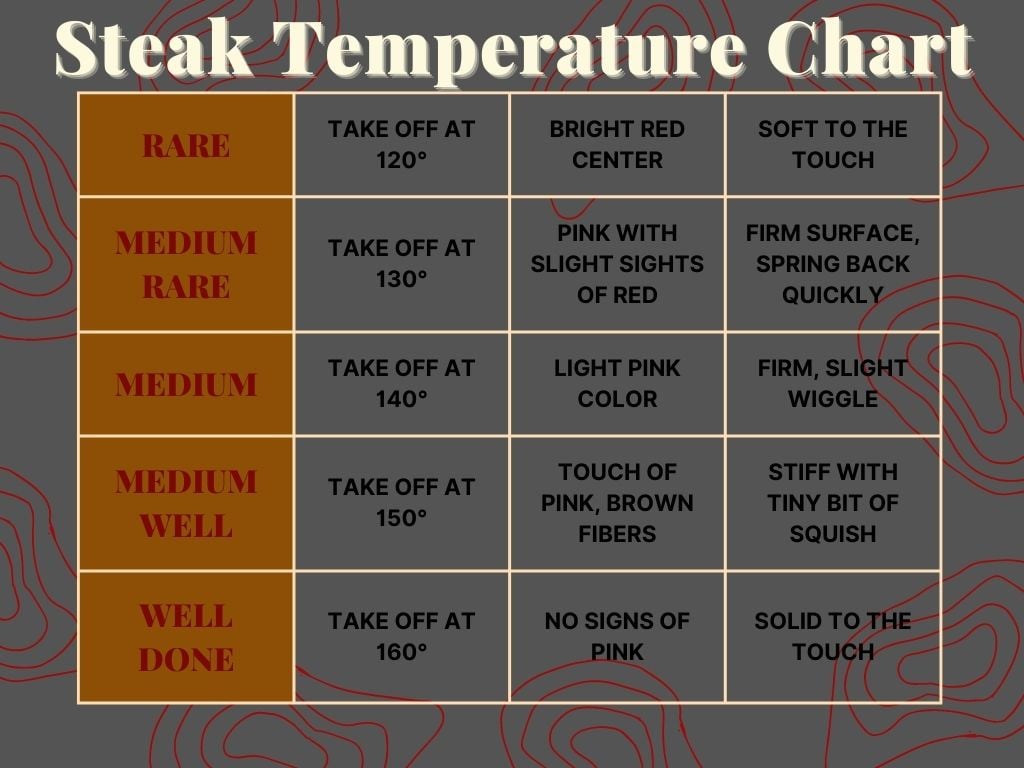
Check Internal Temperature
We’ve been talking all about internal temperatures to know when your steak is done, but how do you do it? Use a meat thermometer; specifically an instant-read thermometer (and you can use it for a lot more than just a steak!). Here’s my favorite meat thermometer that is accurate, simple, and easy to use.
When using a meat thermometer to check your steak temps, place it halfway in the thickest part of the meat. You’ll want to do this when your steak is still on the heating surface. Make sure to not stick it in too far to where it’s touching the pan or you’ll get a false read. Always, always, ALWAYS take your steak off 5°F before your desired doneness!
If you don’t have a thermometer, you can also test your meat out with a middle finger press. Rare meat will be soft to the touch. Medium-rare steak should have a firmer surface than rare, and spring back quickly. Medium steaks will be firm to the touch, but you’ll feel some wiggle in the center. A medium-well steak will be undoubtedly stiff with a tiny bit of squish in the center. Lastly, a well-done steak will feel solid to the touch.
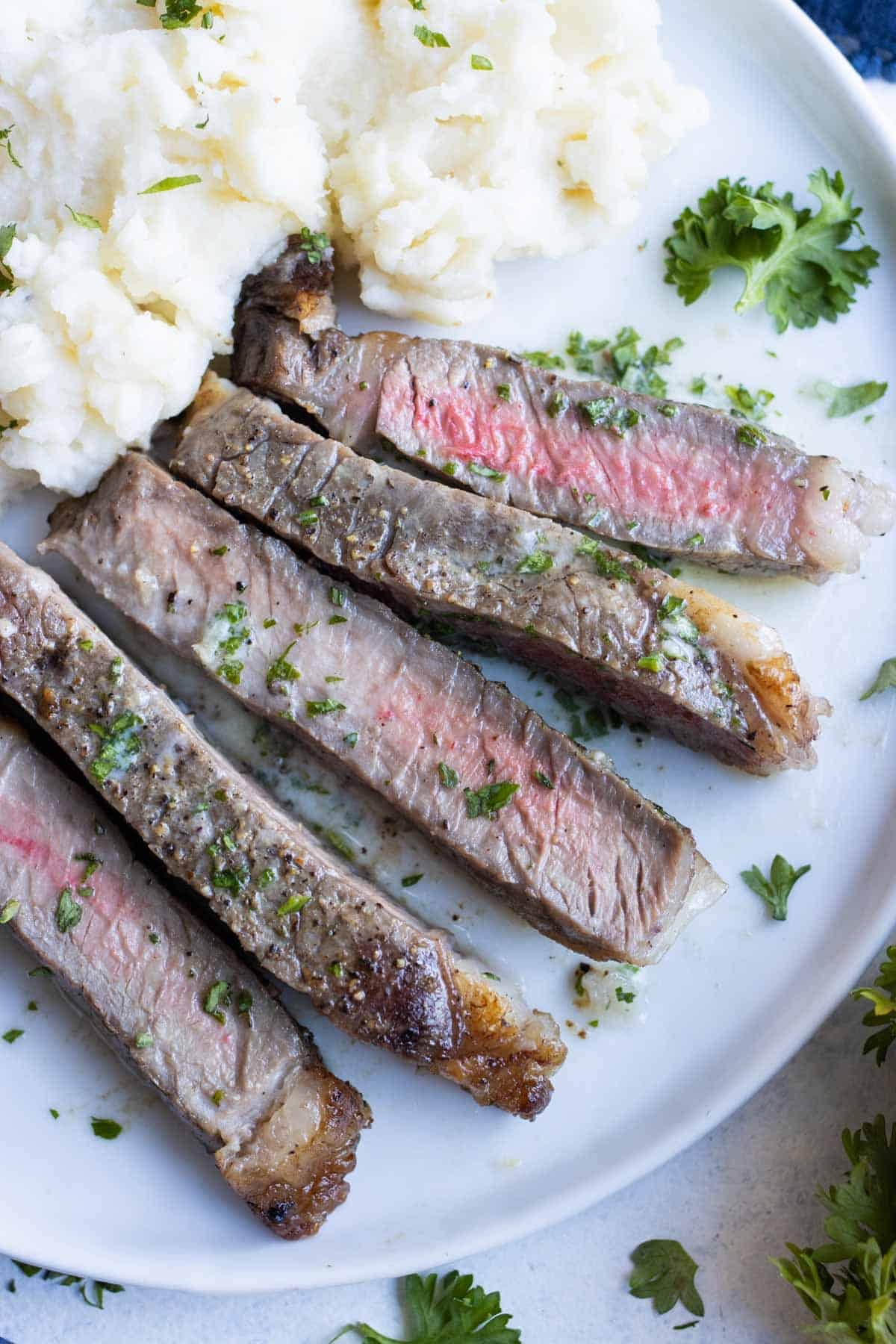
How to Rest Steak
When you’re finished cooking your steak, don’t cut into it right away. Like mentioned before, it’s still cooking (like baking cookies) and the muscle fibers need time to set and redistribute all the delicious juices. After 5-10 minutes, your steak will be ready to cut. Be sure to go against the grain for the cleanest slices.
The Best Steak Recipes
Check out this Filet Mignon Recipe for your next steak Sunday dinner. These Steak Fajitas will satisfy your Tex-Mex cravings. You can always switch up your steak game with these Garlic Butter Steak Bites.














